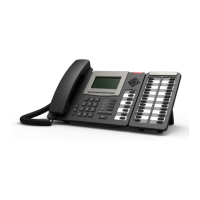Set the filter Port range
Set source address. It can be single IP address,
network address, complete address 0.0.0.0, or network
address similar to *.*.*.0
Set the destination address. It can be IP address,
network address, complete address 0.0.0.0, or network
address similar to *.*.*.*
Set the source address‟ mask. For example,
255.255.255.255 means just point to one host;
255.255.255.0 means point to a network which
network ID is C type.
Set the destination address‟ mask. For example,
255.255.255.255 means just point to one host;
255.255.255.0 means point to a network which
network ID is C type.
Click the Add button if you want to add a new output rule.
Then enable out access, and click the Apply button.
So when devices execute to ping 192.168.1.118, system will deny the request
to send icmp request to 192.168.1.118 for the out access rule. But if devices
ping other devices which network ID is 192.168.1.0, it will be normal.
Click the Delete button to delete the selected rule.
Click the Add button if you want to add a new output rule.
Then enable out access, and click the Apply button.
So when devices execute to ping 192.168.1.118, system will deny the request
to send icmp request to 192.168.1.118 for the out access rule. But if devices
ping other devices which network ID is 192.168.1.0, it will be normal.
Click the Delete button to delete the selected rule.
NAT
NAT is abbreviated from Net Address Translation; it‟s a protocol responsible
for IP address translation. In other word, it is responsible for transforming IP
and port of private network to public, also is the IP address mapping which we
usually say.

